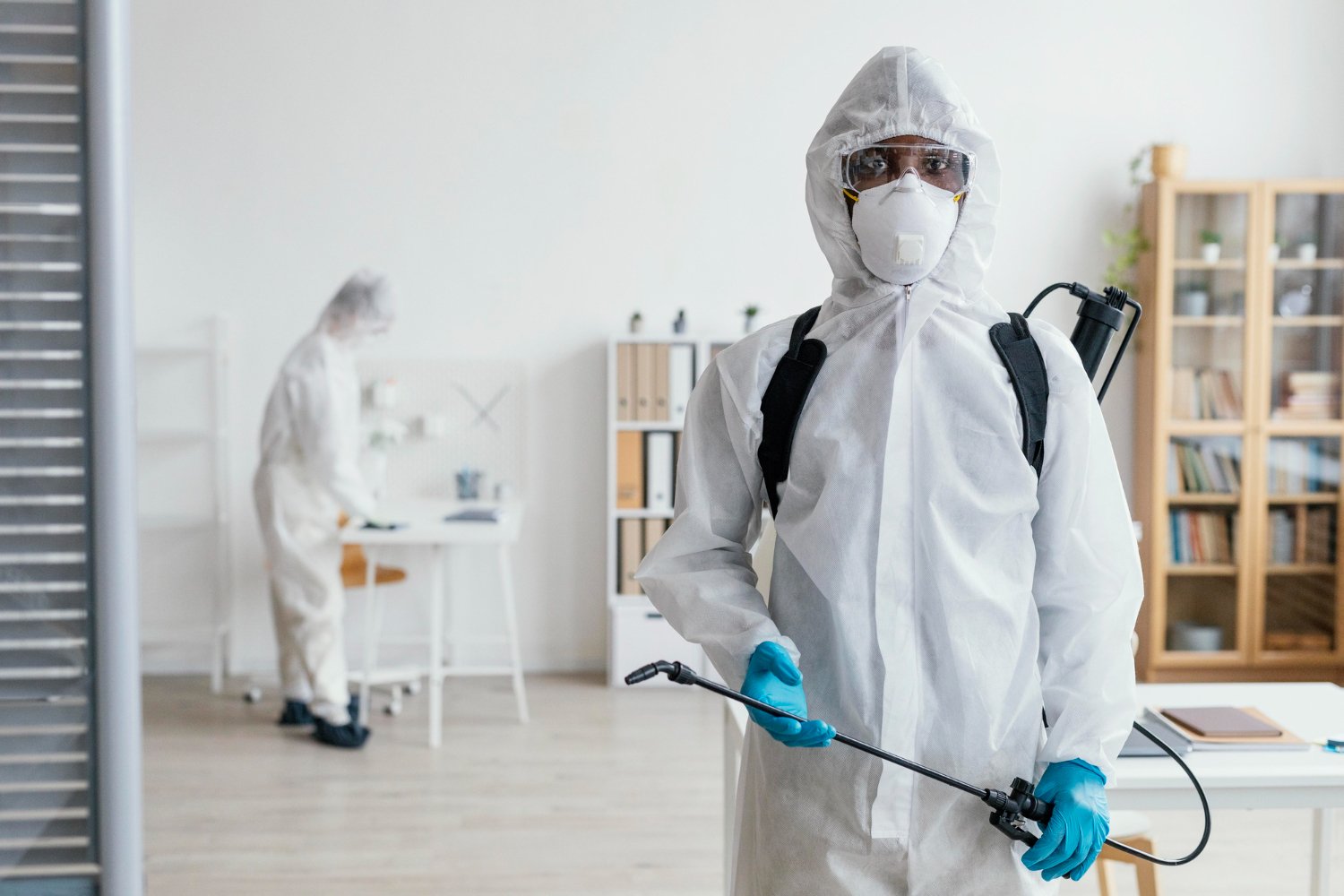Recognizing Various Sorts Of Bug Control Approaches and Their Efficiency
When considering bug control approaches, it is important to understand the varied techniques offered and their differing levels of performance. By exploring the subtleties of these pest control methods, an extensive understanding of just how to resolve bug issues can be developed.
Chemical Insect Control Techniques
Chemical parasite control approaches play a crucial role in efficiently handling and eliminating pest invasions in various atmospheres. One of the vital benefits of chemical bug control is its capacity to offer quick and targeted services to pest issues. Pest Control Auckland.
Nevertheless, it is necessary to take into consideration the prospective dangers and downsides connected with chemical insect control techniques. Overreliance on chemicals can lead to the development of pesticide resistance in bugs, making them tougher to regulate in the future. Furthermore, the usage of particular chemicals can have hazardous impacts on non-target microorganisms, the atmosphere, and human health and wellness if not applied properly.

Organic Insect Control Methods
Utilizing all-natural killers and virus to handle bug populaces effectively, organic insect control approaches supply a sustainable and green method to pest administration. By presenting or advertising the task of organisms that normally prey on or infect insects, such as ladybugs for aphid control or particular microorganisms for caterpillar problems, organic control can assist maintain insect populations at convenient degrees without the requirement for artificial chemicals. This method is specifically advantageous for chemical-free farming methods, as it stays clear of using potentially dangerous substances while keeping plant wellness.

Physical Bug Control Approaches
While biological bug control techniques concentrate on harnessing all-natural killers and pathogens, physical bug control techniques use physical and mechanical barriers to take care of parasite populations. These techniques are commonly thought about eco-friendly as they reduce using chemicals. Physical pest control includes methods such as capturing, utilizing barriers like displays or nets, and literally getting rid of pests from the location.
Catches are typically used in physical parasite control to capture and get rid of pests like rodents and bugs. These traps can be baited with food or pheromones to official website draw in the pests, leading them to a contained area where they can be easily taken care of. Another physical technique is the use of barriers such as displays, nets, or fences to avoid parasites from going into or infesting specific locations. As an example, installing fine mesh displays on home windows can help stay out insects and flies.
All-natural Insect Control Methods
Integrating all-natural predators and plant-based repellents is a crucial strategy in applying efficient all-natural bug control approaches. By urging the existence of advantageous insects like ladybugs, lacewings, or predacious termites, garden enthusiasts can normally regulate pest populaces. These predators eat typical garden parasites such as termites, aphids, and caterpillars, aiding to preserve a well balanced environment without the requirement for chemical treatments.

Furthermore, applying cultural practices such as crop turning, companion growing, and preserving appropriate plant health can also improve the performance of natural insect control approaches. These techniques not just aid in avoiding insect invasions yet likewise promote biodiversity and overall ecological community strength. By incorporating these all-natural strategies, people can successfully handle parasites while decreasing ecological effect.
Integrated Pest Management (IPM) Approach
Applying an Integrated Parasite Management (IPM) approach is necessary for effectively managing parasite populations while minimizing reliance on chemical pesticides. IPM is a comprehensive and sustainable strategy that integrates different insect control techniques to accomplish long-term options. This strategy focuses on control, avoidance, and tracking to resolve bug problems in an eco friendly way.
IPM integrates organic, cultural, physical, and mechanical techniques look at this now with the limited and critical use pesticides when needed. By stressing proactive steps such as habitat adjustment, biological control, and exclusion, IPM intends to lower pest populaces and their effect on the community. Routine monitoring is critical in IPM to assess parasite degrees precisely and determine the most ideal control methods.
Among the vital benefits of IPM is its capability to minimize the risks connected with too much pesticide usage, such as environmental contamination and harm to non-target microorganisms. Additionally, IPM advertises a much more alternative method to pest monitoring by considering the general ecosystem dynamics. In general, the IPM technique offers a effective and lasting option for parasite control while promoting environmental obligation.
Verdict
In conclusion, comprehending the different sorts of insect More Bonuses control approaches and their effectiveness is essential in successfully taking care of bug invasions. Chemical, biological, physical, and natural insect control methods each have their own benefits and restrictions. Integrated Insect Management (IPM) technique, which integrates different techniques for sustainable bug control, is progressively being acknowledged as a alternative and eco-friendly service. By using a combination of these approaches, companies and individuals can efficiently regulate parasites while decreasing harm to the atmosphere.
Chemical parasite control approaches play a pivotal duty in properly managing and eliminating pest infestations in numerous environments.Using natural predators and virus to manage bug populations effectively, organic insect control techniques supply a environment-friendly and lasting technique to pest monitoring. By presenting or advertising the task of organisms that normally prey on or infect bugs, such as ladybugs for aphid control or specific bacteria for caterpillar problems, organic control can aid preserve insect populaces at convenient degrees without the demand for artificial chemicals.While biological bug control approaches concentrate on using natural killers and microorganisms, physical insect control approaches use mechanical and physical barriers to handle bug populaces. Integrated Bug Administration (IPM) technique, which combines different techniques for sustainable bug control, is significantly being acknowledged as a ecologically friendly and alternative solution.